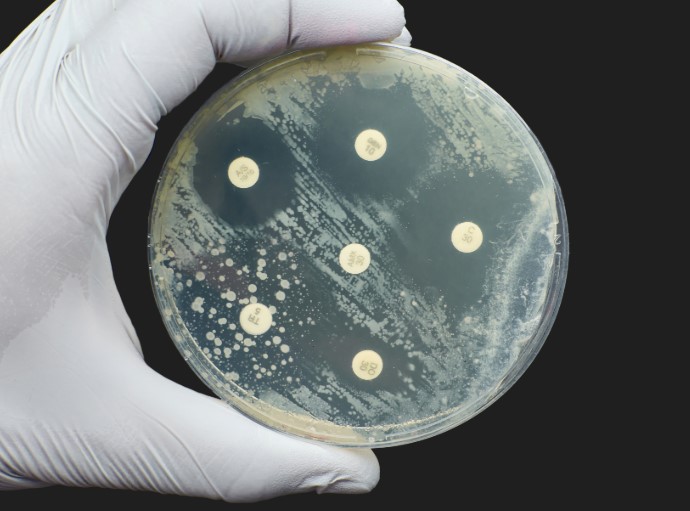
Since the pandemic, many of us rely on hand sanitizer to quickly kill germs and keep us safe from harmful bacteria and viruses. But have you ever wondered how hand sanitizer works and if using hand sanitizer might ever not be a good thing?
While hand sanitizers effectively eliminate most germs, some consumers are concerned about creating superbugs and resistant strains. In this article, we will explore the science behind hand sanitizers and how they compare to washing hands with soap and water. We will also address the potential for creating superbugs and ways to avoid it.
How do resistant germs develop and build tolerance?
Resistant germs, or antibiotic-resistant bacteria, develop and build tolerance mainly through mutations and gene transfer. Bacteria reproduce quickly, and during this process, mutations occur. These mutations may alter the bacteria in a way that makes them resistant to antibiotics. For instance, a mutation could change the target that the antibiotic is supposed to attack, such as the cell wall or bacterial enzymes, making the antibiotic less effective or even useless.
Additionally, bacteria can exchange genetic material with other bacteria, including genes that confer resistance. This gene transfer allows resistance to spread rapidly among bacterial populations. Overuse and misuse of antibiotics in medicine and agriculture exacerbate this problem, as they provide selective pressure that encourages the growth of resistant strains.
How does alcohol kill microbes?
Alcohol-based hand sanitizers typically contain 60-70% ethyl or isopropyl alcohol, which are both effective in killing germs. Alcohol acts as a solvent and denaturant, meaning it breaks down the cell membrane of bacteria and viruses, ultimately killing them.
When applied to the skin, the alcohol active ingredient rapidly destroys microbes in a physical and structural way and then evaporates. Common Sense hand sanitizer goes a step further leaving a coating on skin that prevents the infestation and growth of new bacteria.
Alcohol also has a dehydrating effect on a majority of microbes, causing them to dry out and die. This is effective even against germs that have developed resistance to antibiotics, as they are still susceptible to alcohol’s dehydrating properties.
It’s important to note that alcohol-based hand sanitizers are not effective against all types of germs, such as Clostridium difficile, a bacterium that causes severe diarrhea and intestinal infections. In these cases, proper hand washing with soap and water is still the best method for killing the bacteria.
How Physical Destruction and Desiccation Prevent the Development of Antibiotic-Resistant Strains
When it comes to combating harmful bacteria, hand sanitizers are an important part of our daily hygiene routines. But while we do our best to stay germ-free, concerns about the development of antibiotic-resistant strains have emerged. Understanding how hand sanitizers work sheds light on this issue and offers insights into prevention strategies.
Unlike antibiotics, which target specific cellular processes within bacteria, alcohol based hand sanitizers operate through physical destruction and desiccation. Essentially, they break down the cell membrane of bacteria and viruses, rendering them unable to survive. This mechanism of action poses an important distinction: because hand sanitizers do not rely on chemical interactions with bacteria, there’s much less of an opportunity for these microorganisms to mutate and develop resistance.
By physically disrupting bacteria and dehydrating them, hand sanitizers prevent the conditions typically required for genetic mutations that could lead to antibiotic resistance. This means that even bacteria that survive exposure to hand sanitizer are less likely to evolve and become resistant.
Less likely, but not impossible. This study surprisingly showed that in healthcare settings, some pathogenic bacteria are becoming antibiotic resistant even in direct contact with alcohol based hand sanitizer. To ensure minimal exposure to users and reduce mutagenic opportunity for such bacteria, it’s advised to clean public hand sanitizer dispensers regularly and replace old product with fresh hand sanitizer if it’s been left unused for a long time.
In essence, hand sanitizers offer a two-pronged approach: immediate destruction of bacteria through physical means and the reduction of genetic mutations that could lead to resistance. This underscores their importance in our fight against harmful pathogens while mitigating the risk of creating antibiotic-resistant strains.
Would a higher percentage of alcohol be more effective?
A higher percentage of alcohol is not necessarily more effective for disinfection. In fact, 70% alcohol solutions are often more efficient at killing bacteria than near 100% concentrations.
The effectiveness of alcohol as a disinfectant depends significantly on the presence of water. Water in the 70% solution facilitates the penetration of alcohol into the bacterial cells and is crucial for disrupting the plasma membrane through hydrogen bonding.
Pure ethanol, or near 100% alcohol, tends to extract water from the bacteria instead of entering the cells, leading to dehydration. While this dehydration can kill many organisms, some bacteria have adaptations that allow them to survive such conditions. Hence, a 70% alcohol solution generally provides better antimicrobial action than higher concentrations.
Also, higher concentrations of alcohol can be harsh on the skin and cause dryness, redness, and irritation. This can lead to breaks in the skin, providing an entry point for pathogens and increasing the risk of infections. Therefore, it is recommended to use products like Common Sense Hand Sanitizer with a 60-70% concentration of alcohol for effective disinfection without damaging the skin.
Are there alcohol resistant life forms?
Yes, there are several life forms that exhibit resistance to alcohol. For example, Bacillus cereus, a bacterium, was notably involved in a recall of alcohol pads in 2011 due to contamination. This incident highlighted its ability to survive in alcohol-saturated environments.
Additionally, Acetobacter aceti is a bacterium capable of converting ethanol into acetic acid, an essential process for transforming wine into vinegar.
Some viruses, such as norovirus, which is known for causing stomach flu, show reduced susceptibility to ethanol-based disinfectants. This resistance is partly because they lack a lipid envelope, making certain alcohol-based disinfectants less effective against them. This characteristic is particularly significant in healthcare settings, influencing hygiene protocols in hospitals.
Plus, fungi such as Candida albicans, which can cause infections in the mouth and vagina, have shown resistance to ethanol. This is due to their ability to produce enzymes that break down alcohol into less toxic compounds.

Finally, some insects and worms are also known for their alcohol tolerance. For instance, the fruit fly Drosophila melanogaster has a gene that makes it resistant to the effects of alcohol.
How is washing with soap and water different?
Washing with soap and water is a highly effective method for cleaning hands and removing germs. Soap serves as a detergent that can disrupt cell membranes, and it also acts as a surfactant, which increases the washing capability of water.
This dual action is crucial for cleansing because most bacteria and other organisms reside in the natural oils produced by your skin. When you use soap, it binds with the oil, dirt, and microbes on your skin, forming a suspension in the water.
This allows the undesirable substances to be effectively lifted from the skin’s surface and washed away upon rinsing. Thus, soap doesn’t just kill germs; it also physically removes them from your hands, ensuring a thorough cleanse.
Also, compared to alcohol-based hand sanitizers, soap and water have a higher ability to remove certain types of germs, including norovirus and Clostridium difficile. These pathogens have a protective outer layer that makes them more resistant to alcohol-based disinfectants but can be effectively removed by soap and water.
So, while alcohol-based hand sanitizers are convenient for use on the go, washing with soap and water should always be the preferred method for cleaning hands whenever possible.
Prevent the spread of diseases and create a healthier community
By incorporating hand sanitizers into our hygiene practices alongside proper handwashing with soap and water, we can effectively minimize the development of antibiotic-resistant bacteria. This dual approach ensures thorough cleanliness while reducing the likelihood of creating superbugs.
Understanding the science behind hand sanitizers empowers us to make informed choices about our hygiene routines, ultimately contributing to healthier environments and communities.
